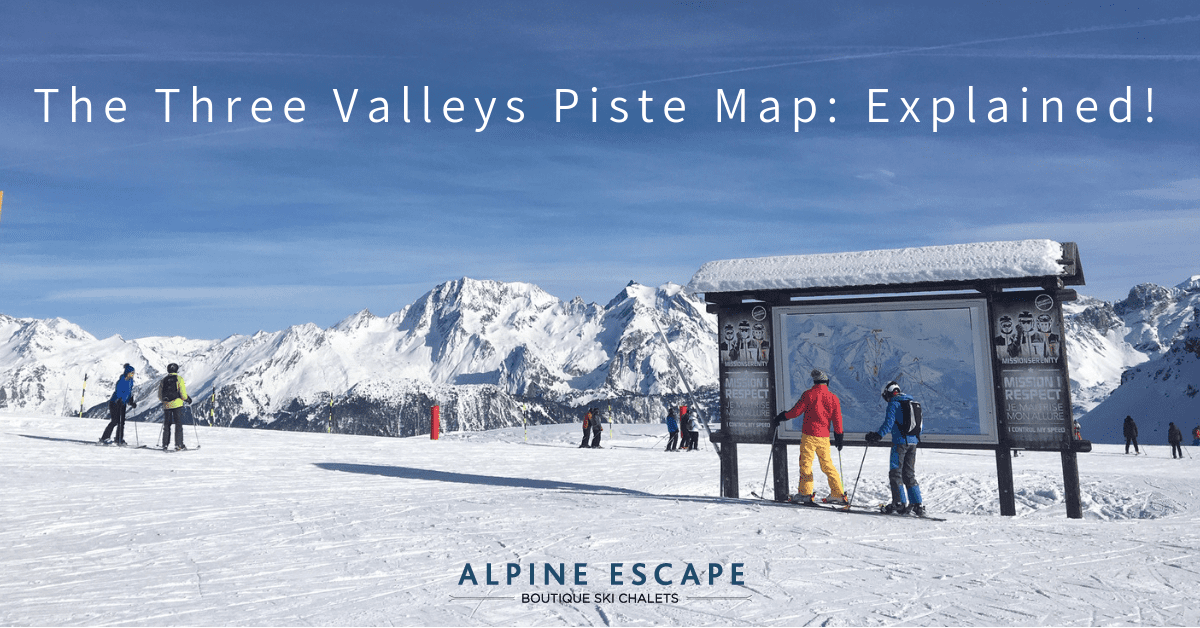
28 Jan The Three Valleys Piste Map: Explained!
Making sense of the 3 Valleys piste map…
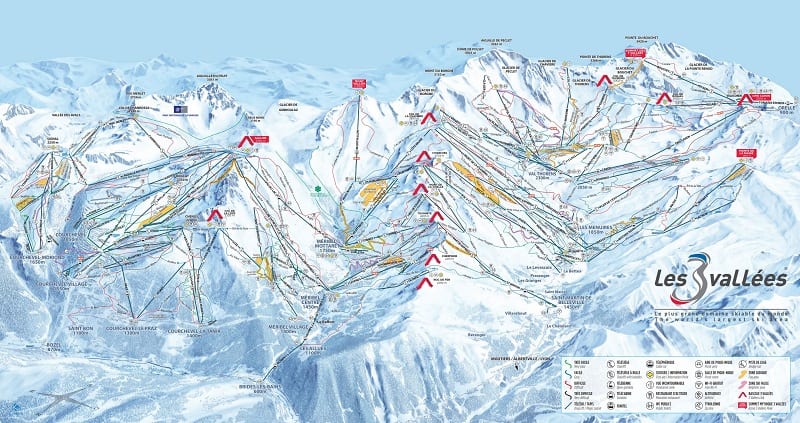
Showing 328 marked runs, 166 ski lifts and 10,500 hectares of snowpark, it’s a miracle the Three Valleys piste map fits onto a piece of paper that fits into your a ski jacket pocket!
But if 62,000 m of cumulative elevation seems like a lot to manage in a week, let us help explain how to read the Three Valleys piste map to make the most of your time in this world-class ski area.
The ski runs:
With a scale of green (easy), blue (moderate), red (intermediate) and black (difficult), the European piste classifications are broadly similar throughout the continent so if you know you can handle a red run in Austria, then it’s more than likely you could challenge yourself to a red here in the Three Valleys.
On the 3 Valleys Piste Map, the wavy lines in these four colours are the ski slopes, and their names (for example Plan Fontaine, Suisses) are written within these lines.
There are also coloured areas which mean:
- Yellow = snowpark or fun area
- Pink = beginner zone
- Grey = reserved for racing and not open to the public
Be aware! There are new runs and lifts that appear every year, so make sure to pick up the latest copy of the piste map each time you visit the Three Valleys, so that a) you can check out the new pistes, b) not get confused if a lift has changed name.
Sometimes work is undertaken in the summer to flatten or reshape areas of the mountain, so runs may change colour from year to year – something to be aware of if you are skiing with beginners.
Top tip: The artwork on the 3 Valleys Piste Map also shows the forested areas, which is useful for snowy days as visibility is better on runs that are lined with trees.
The ski lifts:
On the 3 Valleys Piste Map, the straight, black lines are the ski lifts to take you UP the mountain!
You’ll need a lift pass to get on these, with the exception of those marked with a star, which are usually free drag lifts for beginners. In Courchevel these are Mickey (Moriond), Cospillot and Roys (Village), Bellecote (1850) and Troika (La Tania).
Each lift is marked with the name and a little symbol which tells you whether it’s a chairlift, gondola or large cable car. The drag lifts and magic carpets (like in the airport, but snowier!) don’t have one of these symbols, ie. they are marked simply by the black line.
There is very good signage around the Three Valleys which helps you know which lift is in which direction, and around the links between villages and resorts you’ll see signs saying ‘To Courchevel Moriond’ etc.
Top tip: Be aware of lift closing times! It’s all too easy to get caught out by having that extra drink in the restaurant… But fear not, the three Valleys piste map handily displays all the lift opening and closing times (which change during the first or second week of February to allow for the longer daylight hours). That said, weather conditions mean that these times are subject to change. Which leads to top tip #2…
Top tip: If it’s a windy or very snowy day, then be careful not to venture too far afield. As you head through the lift stations, keep an eye on the blackboards which will warn you if the lifts are due to shut earlier than planned, or whether it’s best to avoid leaving your ‘home’ valley.
Other things to look out for:
The piste map also has a key which shows useful things such as:
- Viewpoints
- Piste security (plus phone numbers in case of an accident)
- Photo spots
- Picnic benches
- Picnic rooms (good on snowy days)
- Restaurants (unfortunately the maps don’t provide names but ask your host or concierge for information!)
- WCs
- Sledging areas
- Free WiFi spots
- Airports! (There are ‘altiports’ in both Courchevel 1850 and Meribel)
The large red arrows show the iconic peaks of the Three Valleys, so if you’re after a snapshot across endless white mountain tops, then head up to these! They are also access points to get between the Valleys.
Top tip: If you purchase a one valley pass (eg. Courchevel) then you won’t be able to use your pass to come up the lifts if you ski down from these link points. You can ski down, but would have to get a taxi back, or go into the local lift pass office and purchase a single journey to get back over into your valley.
Travelling with a non-skier? There’s a separate 3 Valleys Piste Map for pedestrians, to show which are accessible on foot. This is useful when planning your day as there are usually restaurants at the top of these pedestrian lifts, meaning that everyone can meet up for lunch! Check out our mountain restaurant recommendations here.
Snow Parks in the Three Valleys
The Three Valleys has 10500 hectares of snowparks and fun areas, marked in yellow on the 3 Valleys Piste Map. These range from spots for children and beginners, to places where budding freestylers hang out on a daily basis. The legendary DC Area 43 above Mottaret is the best known of these, but if this looks a little daunting, then the Family Park in Courchevel is a popular spot. Over in Moriond there are some fun valleys (Fun Park and Snake Park), whilst in Val Thorens there is a Family Park alongside the larger VT Park, as well as a Ski Cross JF Chapuis and the Walibi Gliss near Les Menuires. Meribel’s Inuits and Yeti parks are popular with younger kids, and the Piste des Animaux is a nice winding green run through the trees, which has interactive features with the local wildlife on display.
Three Valleys for Advanced Skiers
Things to take notice of if you’re venturing off-piste or looking for a challenge are:
- Liberty Ride areas
These marked areas are designated ungroomed areas which are usually gentle slopes in safer areas where people can try out powder skiing, for example in St. Martin de Belleville by the St Martin Express, or Courchevel Moriond near Granges. - Piste security
At the pisteurs’ huts you’ll see a flag waving which will indicate the avalanche risk, which is on a scale of 1-5. A yellow flag represents 1 and 2 (low or limited risk), 3 and 4 are marked with a yellow and black chequered flag (considerable to high risk) and a black flag – VERY rarely seen – means that the risk is 5 = very high. It’s worth noting that level 3 (considerable) means that “avalanches may be triggered on many slopes even if only light loads are applied”. - Ask an expert If you are venturing off-piste, then do consider taking avalanche safety equipment and hiring a guide or instructor for the day. There are many ski schools whose instructors are available to show you the incredible off-piste in safety, without having to interpret the map!
For more information on the 3 Valleys Piste Map visit https://www.les3vallees.com/en/ and download your PDF of the 3 Valleys Piste Map here



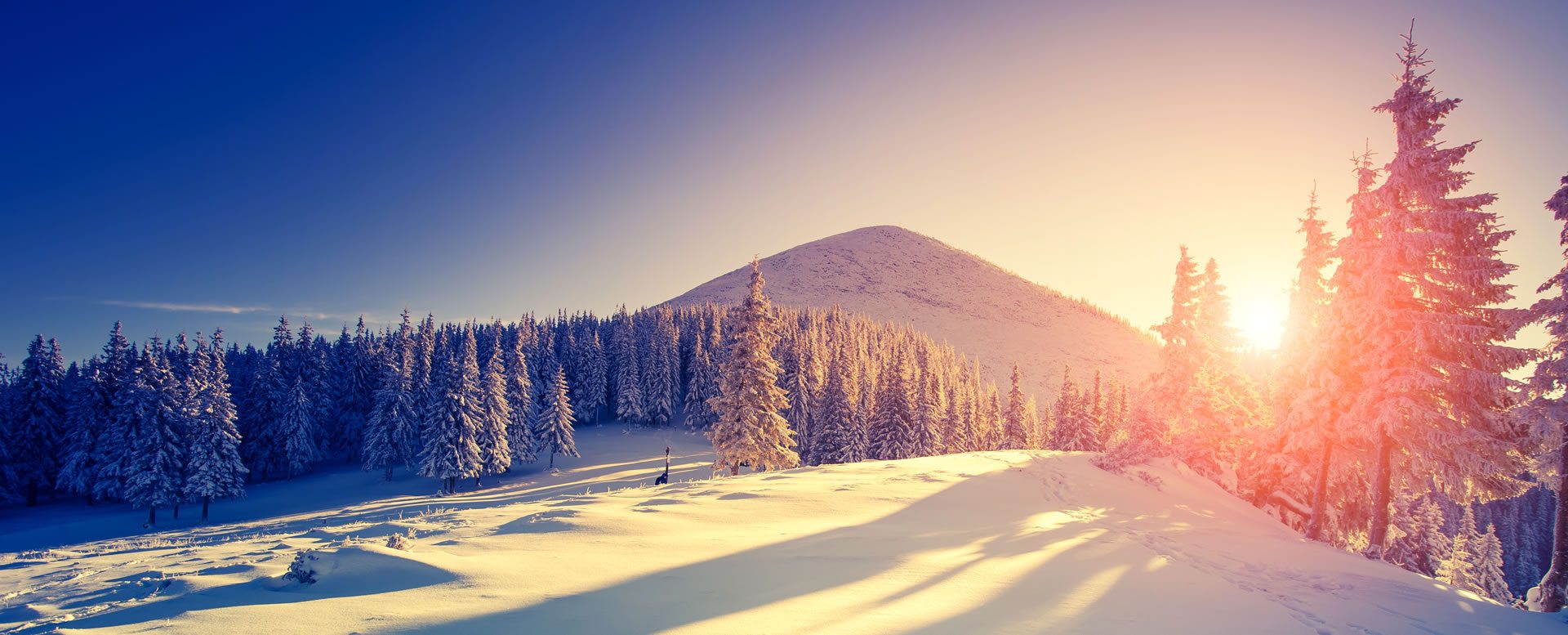
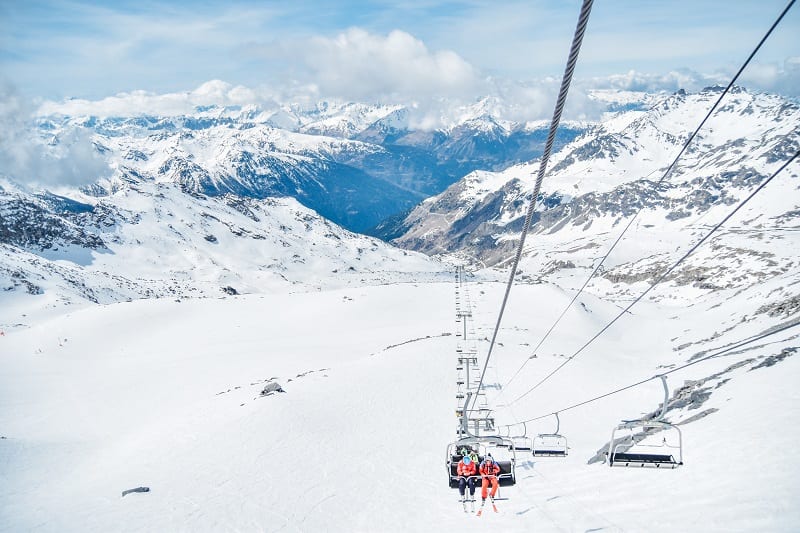
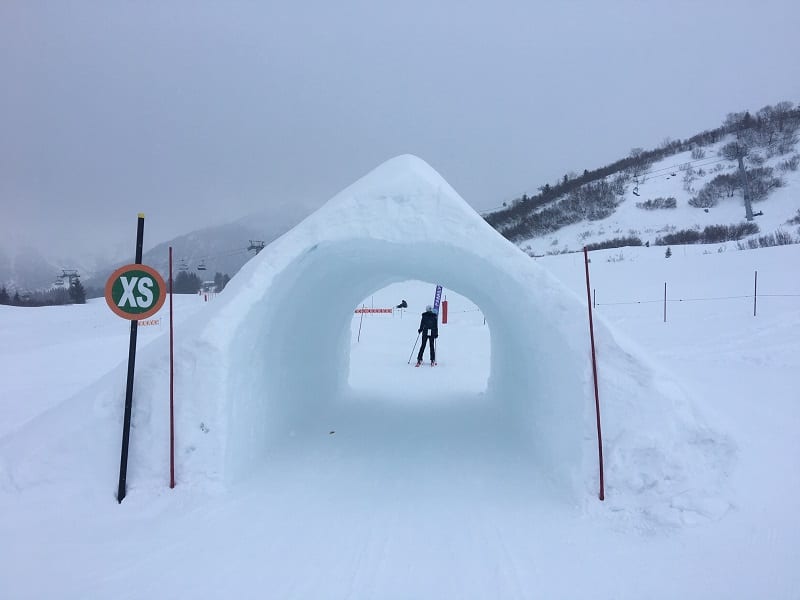
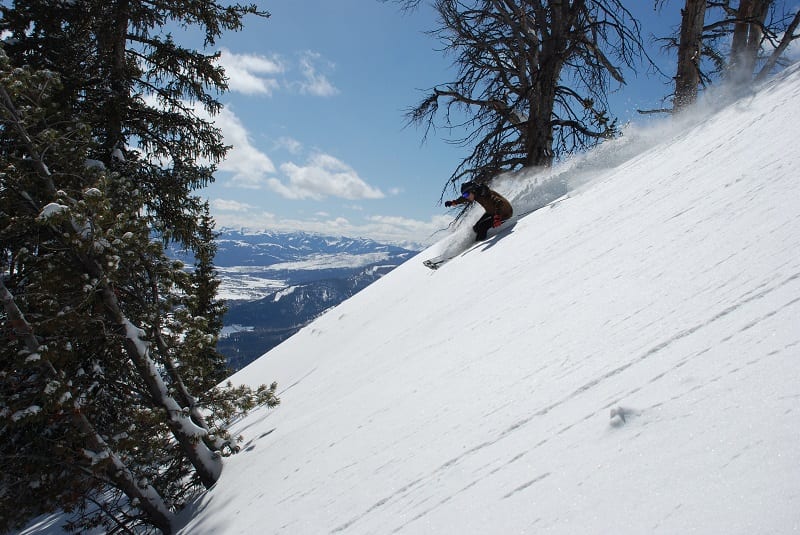
Sorry, the comment form is closed at this time.